Typically, we associate the centuries-old Japanese art form with wood print masters like Katsushika Hokusai and Hishikawa Moronobu, who rendered everything from "Great Waves" to Edo-era erotica. But, as a recent exhibition has graciously pointed out, cats played a surprisingly prominent role in the work of Japan's illustrators in the 17th century on. Behold: "Life of Cats: Selections from the Hiraki Ukiyo-e Collection."
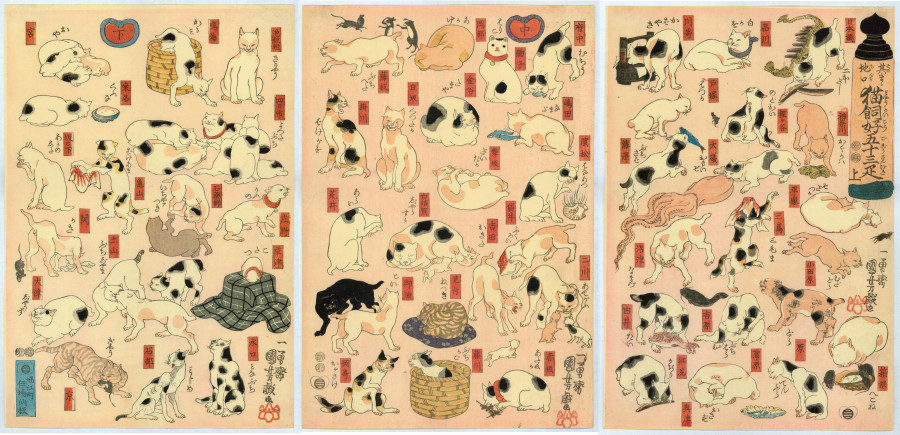
Miwako Tezuka, director of the Japan Society Gallery, hand-picked the works in "Life of Cats," no doubt capitalizing on the digital age's preoccupation with watching cats play keyboards. While on the surface, the show is a cheeky way of penetrating mainstream audiences, goading the less fanatic of art admirers into a gallery space with the promise of truly vintage whiskers, the works give a glimpse into a real art world treasure: the Hiraki Ukiyo-e Collection, based in Tokyo. We can't fault them for that.
The exhibition includes five categories: cats and people, cats as people, cats versus people... you get the gist. (The last two are "Cats Transformed" and "Cats and Play.") A press release for the show boasts a historical perspective on the ways in which our Japanese ancestors interacted with cats on a daily basis, either mimicking their ways in kabuki theater or channeling cat-related activities into their erotic fantasies. Some visions are more mundane, with cats lounging, provoking play time, gazing out windows. Life as seen through Ukiyo-e is, maybe, not so removed from today.
" Life of Cats: Selections from the Hiraki Ukiyo-e Collection" will be on view at Japan Society Gallery from Friday, March 13 to Sunday, June 7, 2015.

Utagawa Kunisada II (1823–1880), Kashiwagi
from the series The False Murasaki's Rustic Genji, 1848–54. Color
woodblock print; 22 3/8 x 36 7/8 inches. Courtesy Hiraki Ukiyo-e
Foundation.
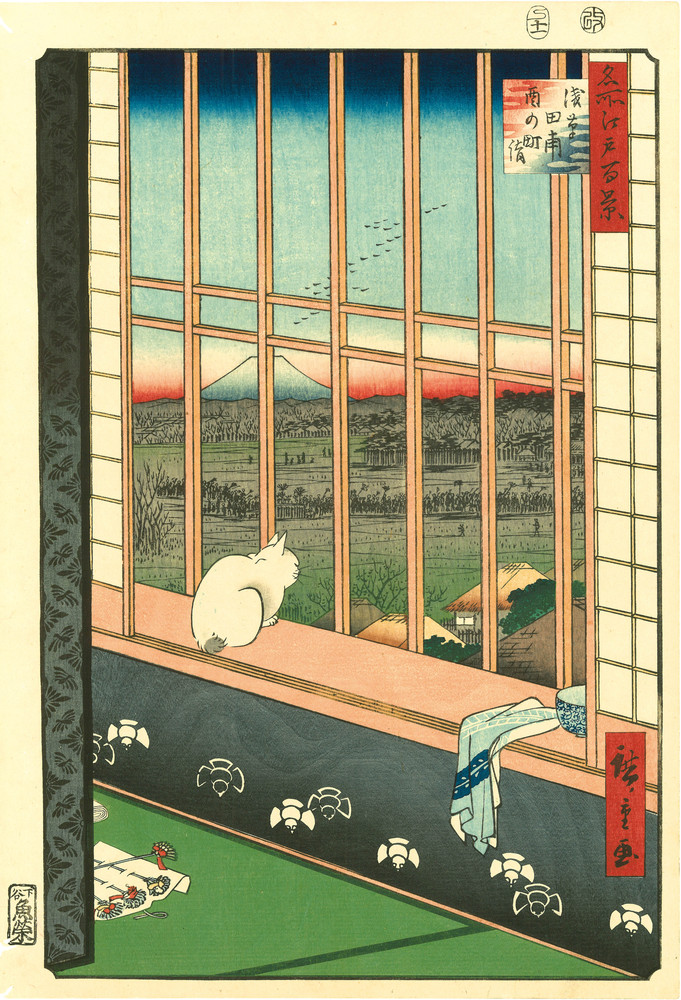
Utagawa Hiroshige (1797–1858), Asakusa
Ricefields and Torinomachi Festival from the series One Hundred Famous
Views of Edo, 1857. Color woodblock print; 22 ½ x 16 inches. Courtesy
Hiraki Ukiyo-e Foundation.

Utagawa Yoshiiku (1833–1904), The Story of
Otomi and Yosaburō, 1860. Color woodblock print; 22 ½ x 16 inches.
Courtesy Hiraki Ukiyo-e Foundation.
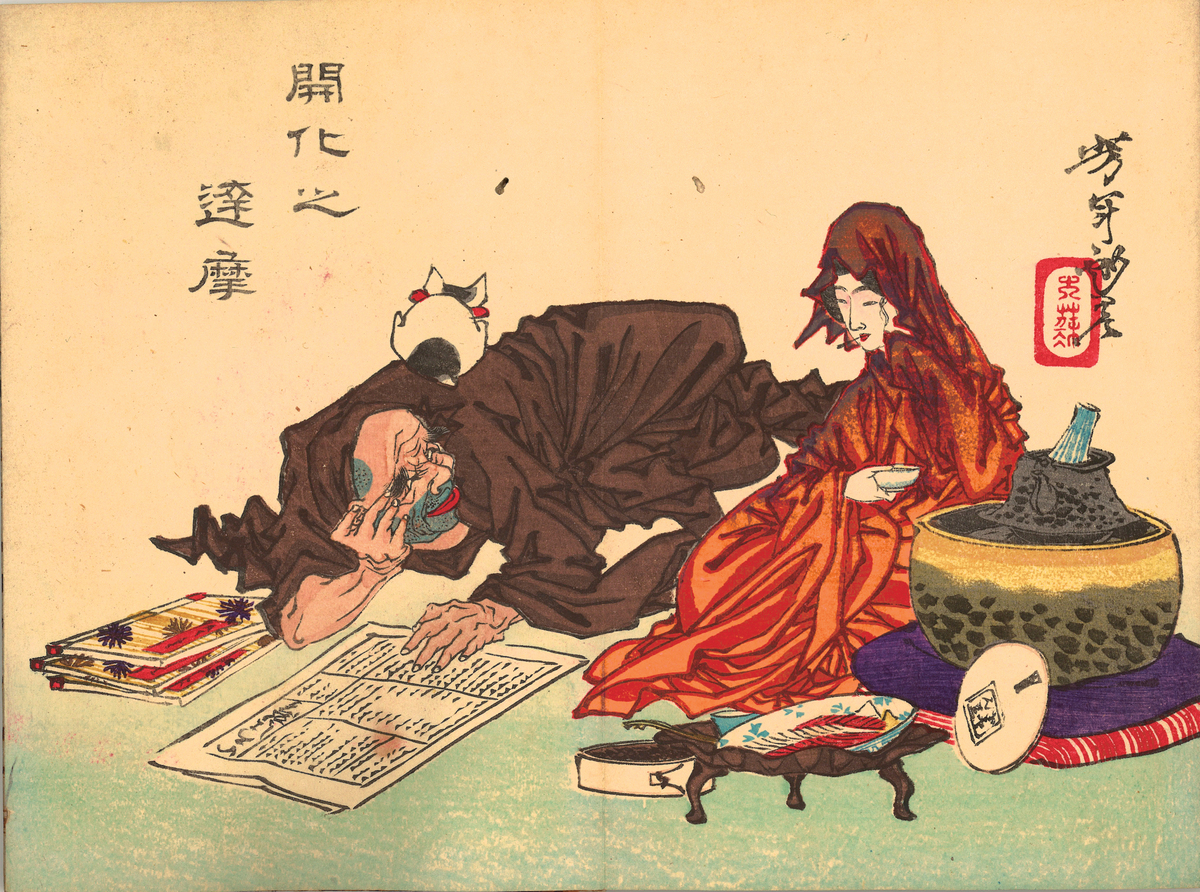
Tsukioka Yoshitoshi (1839–1892), The
Enlightenment of Daruma from an untitled series known as Sketches by
Yoshitoshi, 1882. Color woodblock print; 22 ½ x 16 inches. Courtesy
Hiraki Ukiyo-e Foundation.
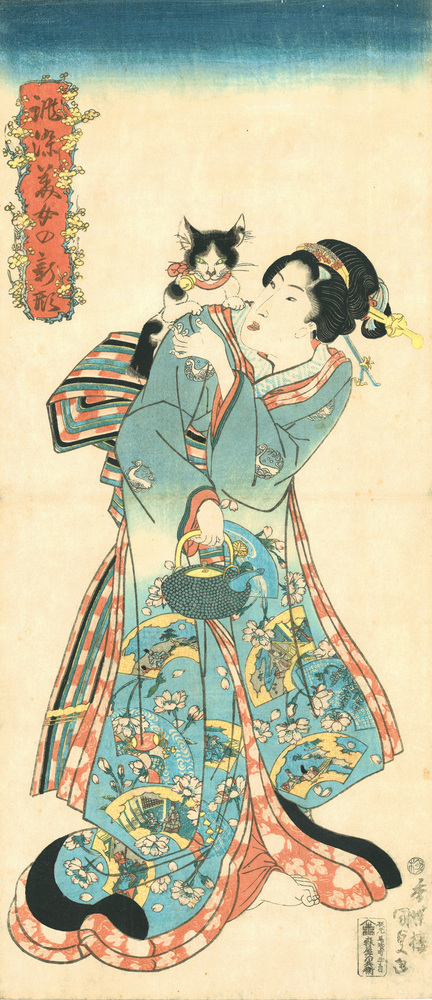
Utagawa Kunisada (1786–1864), Cat and Beauty
from the series Beauties in New Styles Dyed to Order, 1818–30. Color
woodblock print; 36 7/8 x 22 3/8 inches. Courtesy Hiraki Ukiyo-e
Foundation.
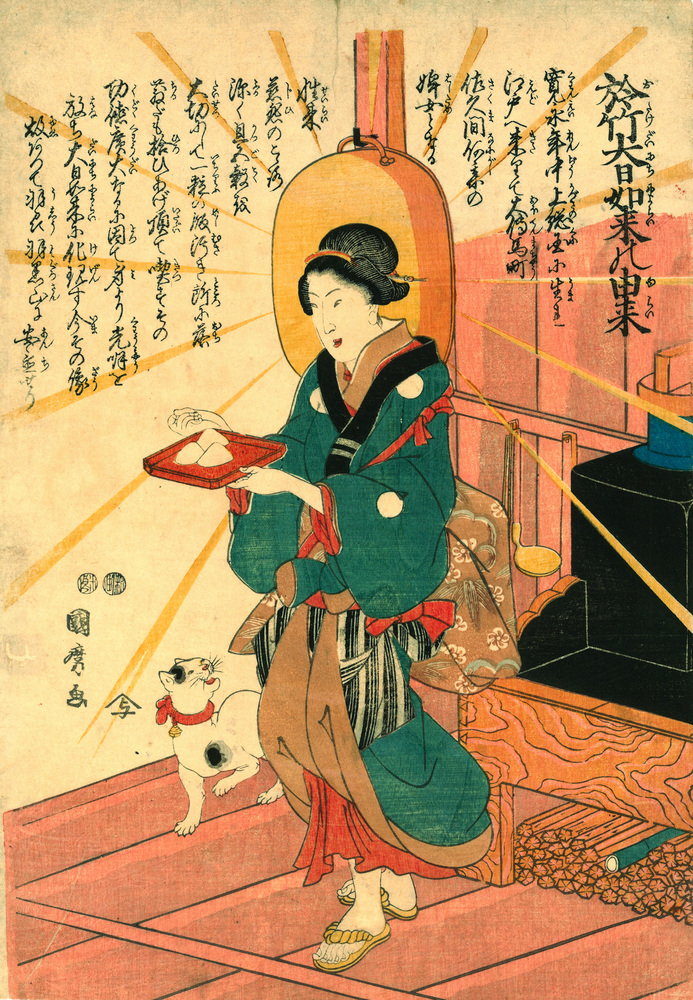
Utagawa Kunimaro (active ca. 1850-75), A
Brief History of the Buddha Dainichi Disguised as Otake, 1849. Color
woodblock print; 22 ½ x 16 inches. Courtesy Hiraki Ukiyo-e Foundation.
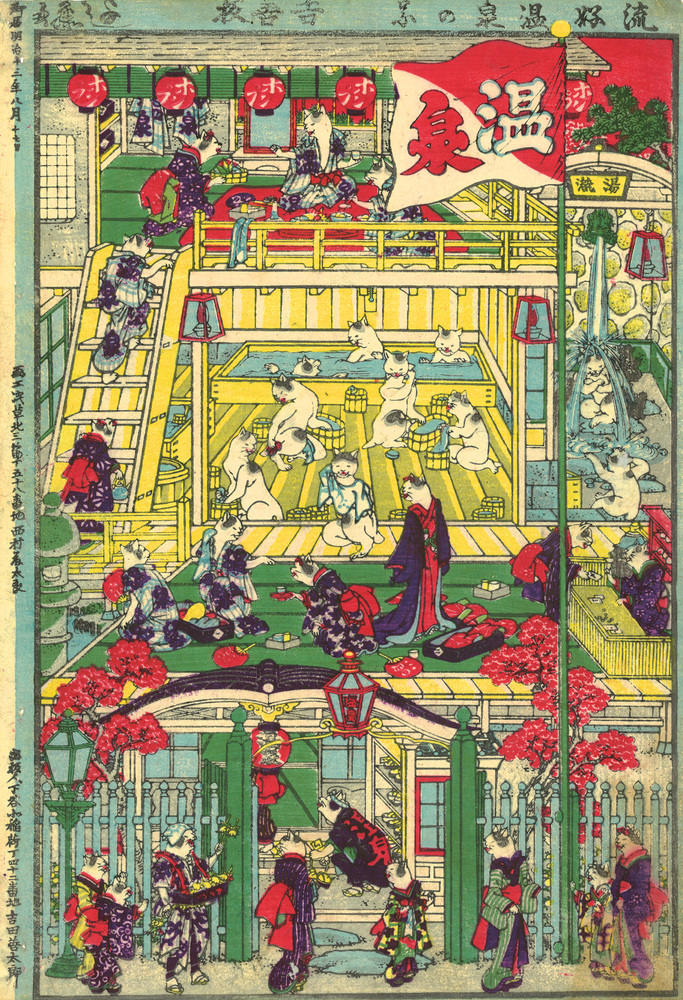
Utagawa Yoshifuji (1828–1887), Popular
Hotspring Spa [of Cats], 1880. Color woodblock print; 22 ½ x 16 inches.
Courtesy Hiraki Ukiyo-e Foundation.

Tsukioka Yoshitoshi (1839–1892), Looking
Tiresome: The Appearance of a Virgin of the Kansei Era from the series
Thirty-two Aspects of Customs and Manners, 1888. Color woodblock print;
22 ½ x 16 inches. Courtesy Hiraki Ukiyo-e Foundation.
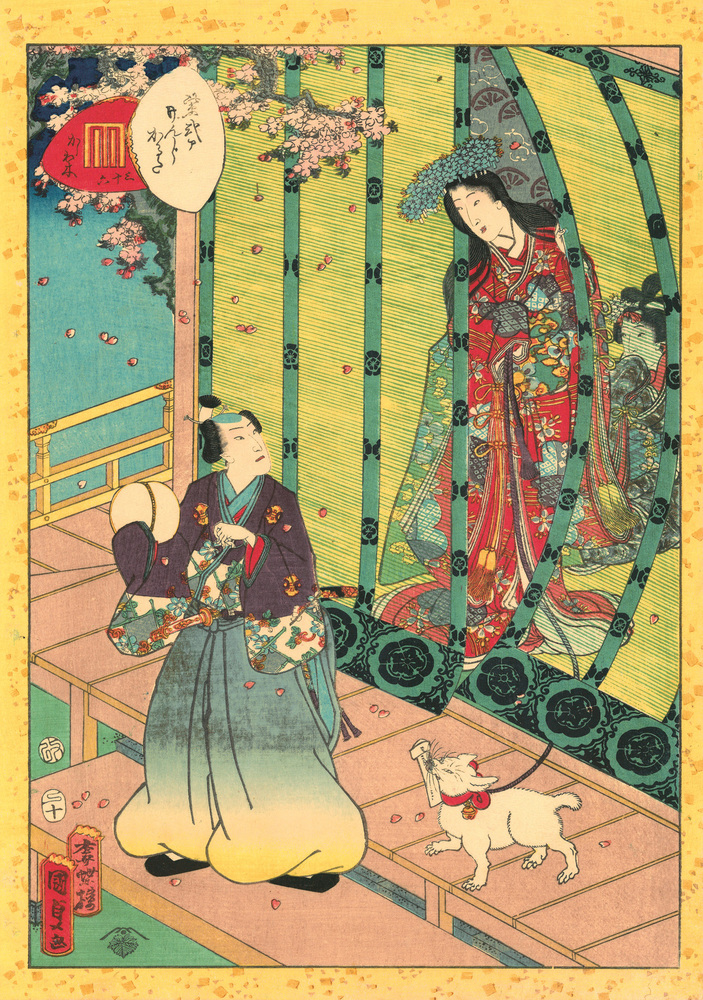
Utagawa Kunisada II (1823–1880), No. 36,
Kashiwagi from the series Lady Murasaki's Genji Cards, 1857. Color
woodblock print; 22 ½ x 16 inches. Courtesy Hiraki Ukiyo-e Foundation.
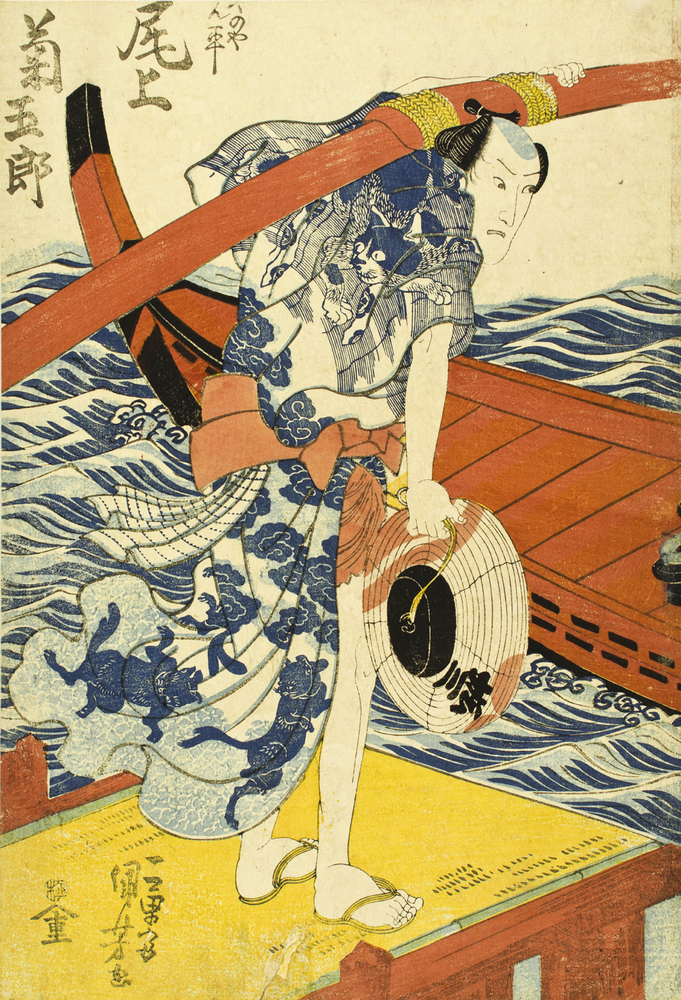
Utagawa Kunisada (1786–1864), The Actor Onoe
Kikugorō III as Kayanoya Kanpei, 1833. Color woodblock print; 22 ½ x 16
inches. Courtesy Hiraki Ukiyo-e Foundation.

Tsukioka Yoshitoshi (1839–1892), Sixth
Month: Fukusuke of Shinbashi with Morning Glories at Iriya from the
series of Pride of Tokyo’s Twelve Months, 1880. Color woodblock print;
22 ½ x 16 inches. Courtesy Hiraki Ukiyo-e Foundation.
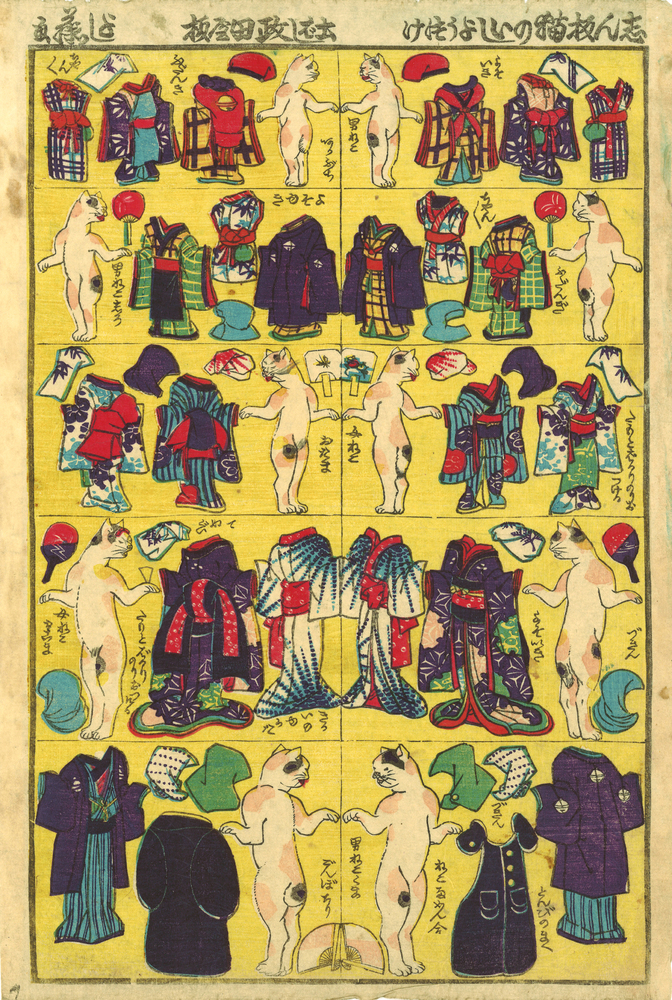
Utagawa Yoshifuji (1828 – 1887), Newly
Published Applications for Cats, ca. 1868–1912. Color woodblock print;
22 ½ x 16 inches. Courtesy of Hiraki Ukiyo-e Foundation.
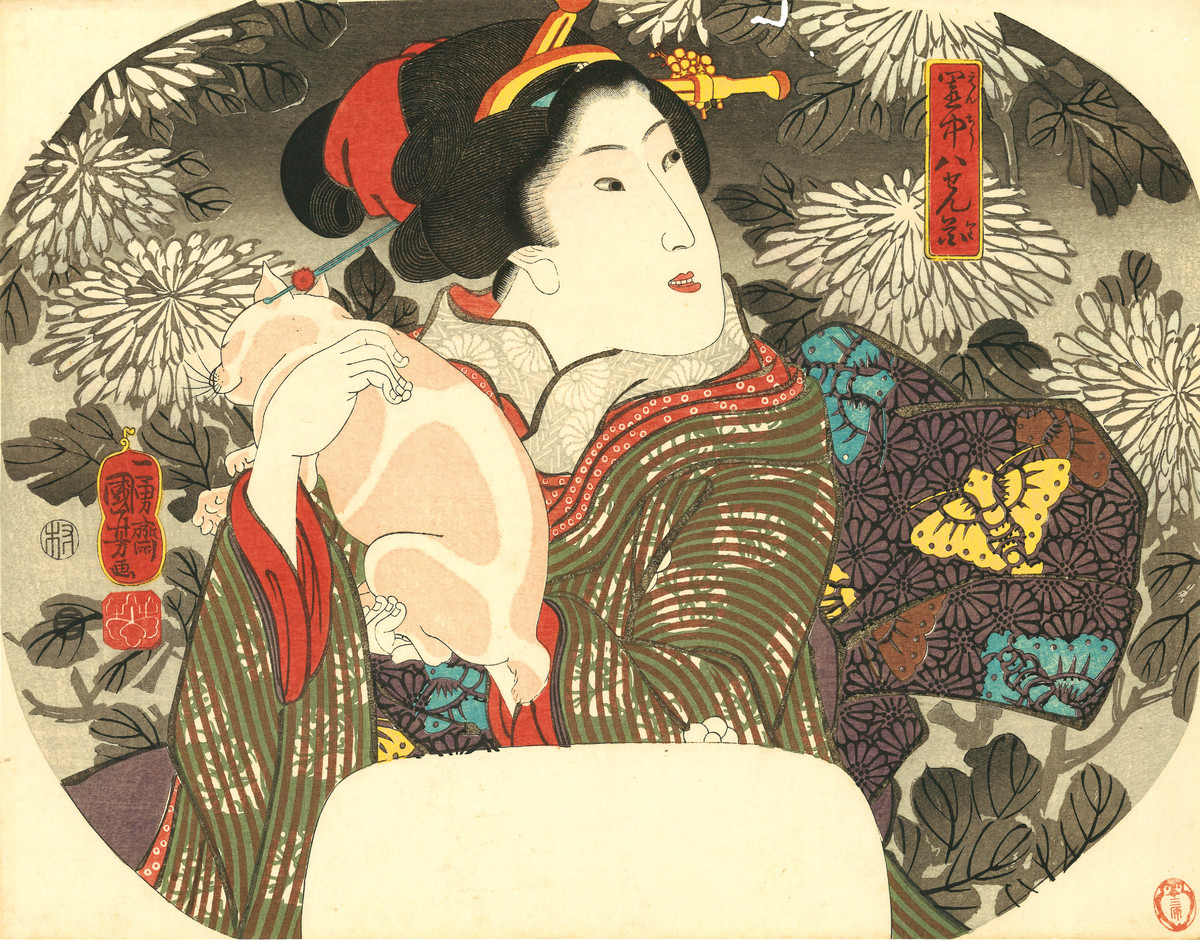
Utagawa Kuniyoshi (1797–1861),
Chrysanthemums from the series Eight Selected Flowers from the Garden,
1844–48. Color woodblock print, 16 x 22 ½ inches. Courtesy Hiraki
Ukiyo-e Foundation.
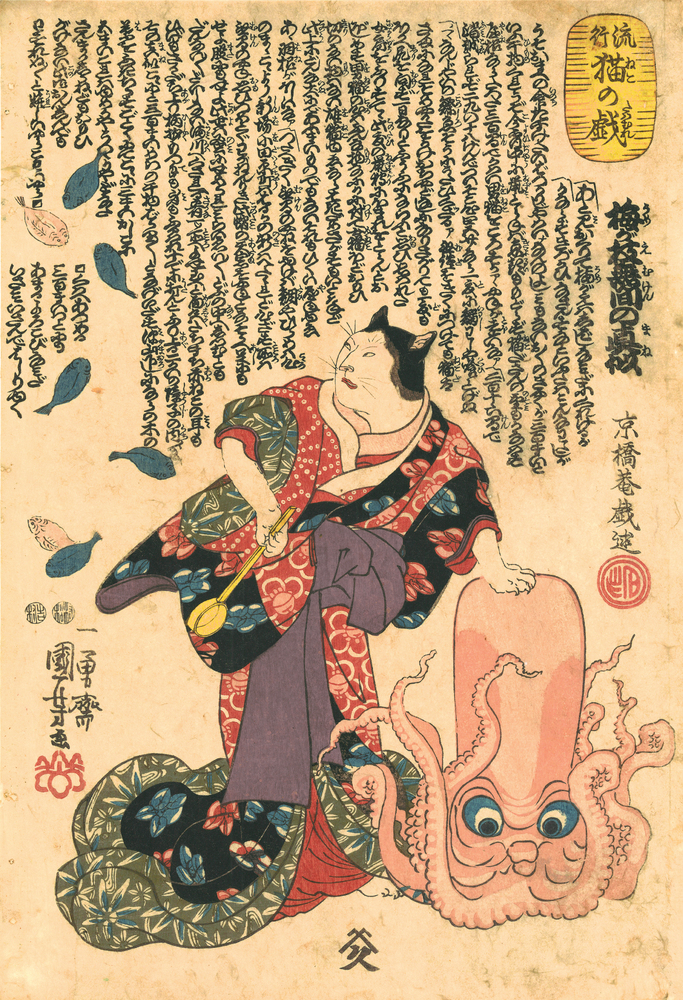
Utagawa Kuniyoshi (1797–1861), Parody of
Umegae Striking the Bell of Limitless [Hell] from the series Fashionable
Cat Games, 1848–54. Color woodblock print; 22 ½ x 16 inches. Courtesy
Hiraki Ukiyo-e Foundation.
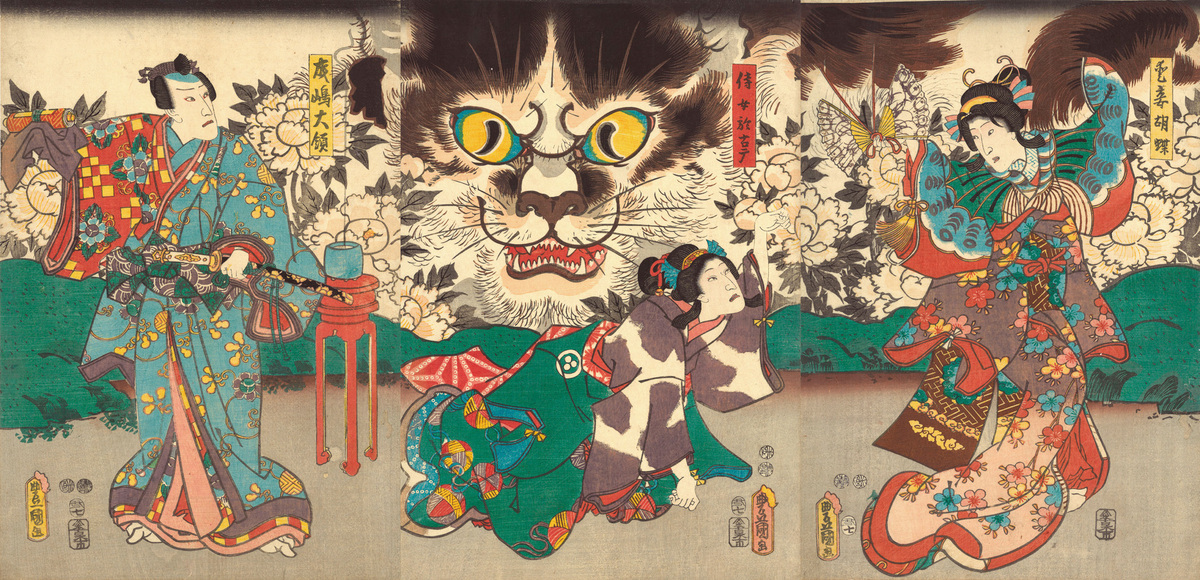
Utagawa Kunisada (Toyokuni III; 1786–1865),
Beloved Concubine Kochō, Her Maid Okoma, and Narushima Tairyō, 1853.
Color woodblock print; 22 3/8 x 36 7/8 inches. Courtesy Hiraki Ukiyo-e
Foundation.
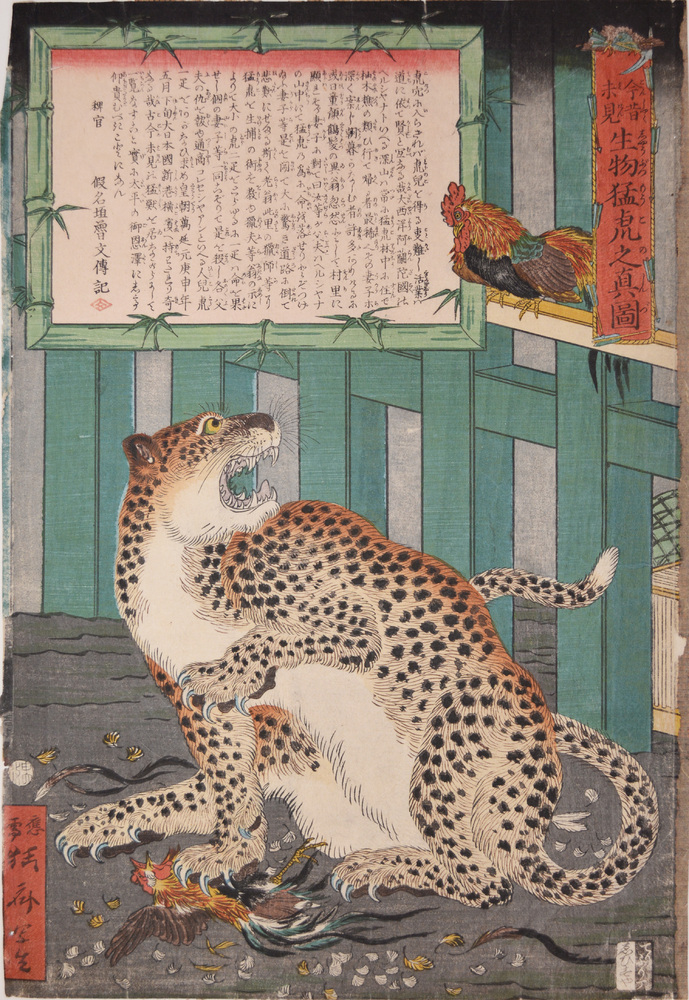
Kawanabe Kyōsai (1831–1889), A True Picture
of the Fierce Live Tiger Never Seen from the Past to the Present, 1860.
Color woodblock print; 14 x 9 ¾ inches. Courtesy Ronin Gallery, New
York.
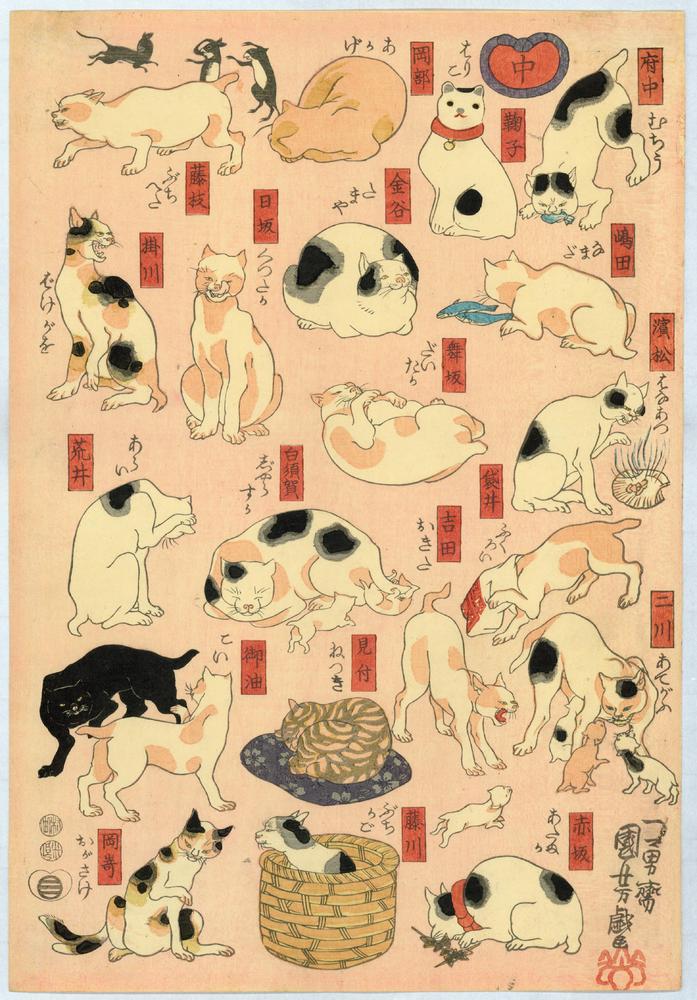
Utagawa Kuniyoshi (1797–1861), Cats
Suggested by the Fifty-three Stations of the Tōkaidō, 1847. Color
woodblock print; each sheet 14 5/8 x 10 inches. Courtesy Private
Collection, New York.
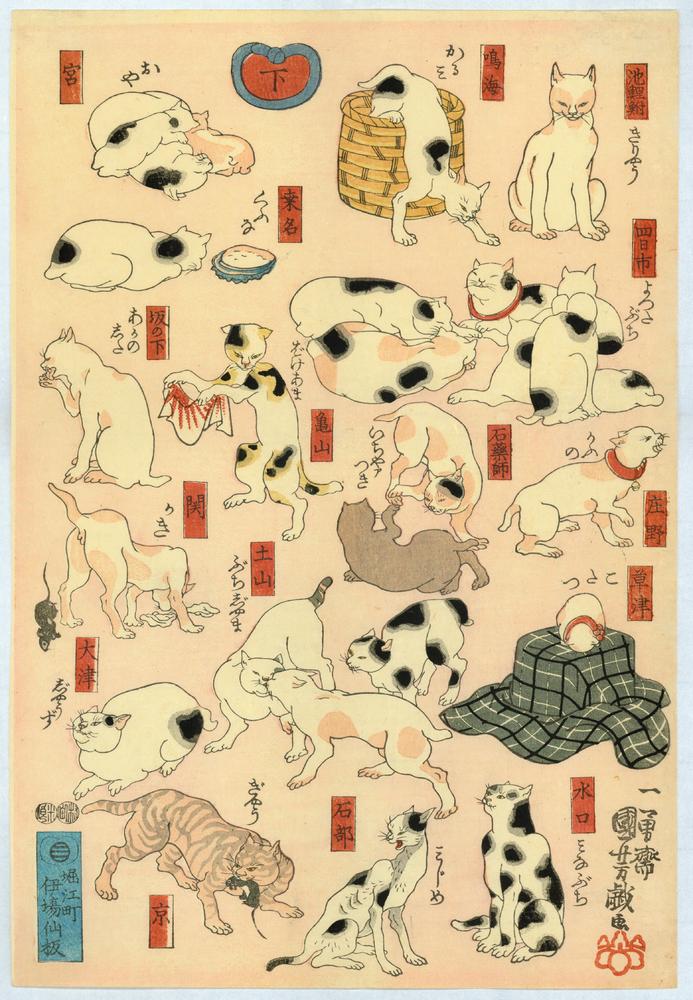
Utagawa Kuniyoshi (1797–1861), Cats
Suggested by the Fifty-three Stations of the Tōkaidō, 1847. Color
woodblock print; each sheet 14 5/8 x 10 inches. Courtesy Private
Collection, New York.

Utagawa Kuniyoshi (1797–1861), Cats
Suggested by the Fifty-three Stations of the Tōkaidō, 1847. Color
woodblock print; each sheet 14 5/8 x 10 inches. Courtesy Private
Collection, New York.
No comments:
Post a Comment